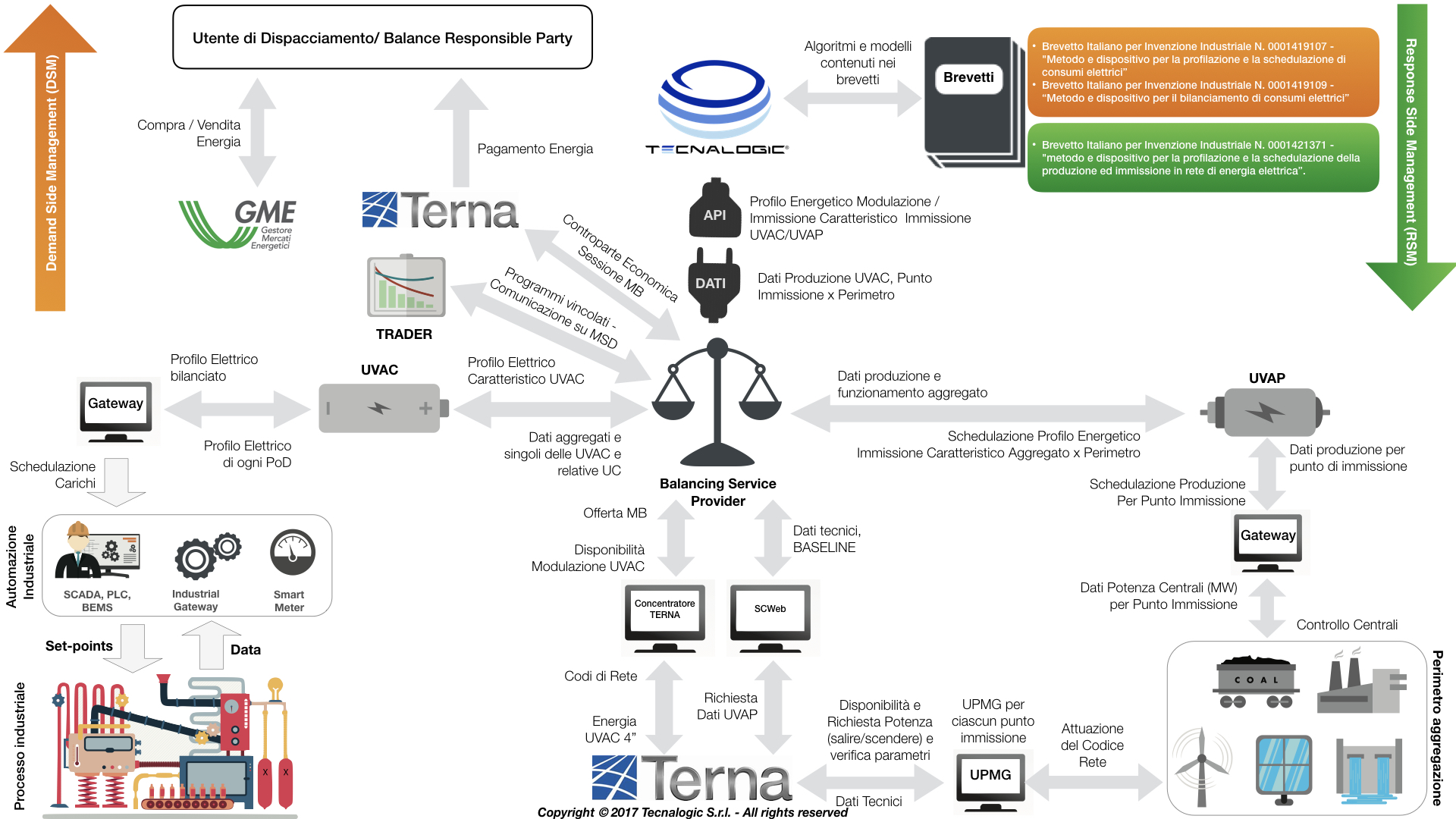Italian normative reference
With resolution 300/2017/R/eel Autorità per l’energia elettrica il gas e il sistema idrico (today called Autorità di Regolazione per Energia Reti e Ambiente) has defined the criteria to allow demand, production units not already enabled (non-programmable renewable sources, distributed generation) and accumulation systems to participate in the dispatching services market (MSD) as part of pilot projects.
The resolution defines that the pilot projects may concern:
- the participation in MSD of the demand and production units not yet authorized (including the accumulation systems that are equated with the production units);
- the use of storage systems, in particular in combination with relevant production units enabled to participate in MSD in order to optimize the supply of dispatching resources in compliance with the requirements set by the Network Code;
- the aggregation modalities of the production and consumption units, according to geographical aggregation perimeters consistent with the network model used by the algorithm for the selection of the offers accepted on the MSD in such a way that the movement of the units does not violate the network constraints. With reference to the possible aggregations, the resolution provides that aggregates called UVA (enabled virtual units) may be established, in compliance with the perimeter defined by Terna and, in particular:
- production enabled virtual units (UVAP), characterized by the presence of only not relevant production units (whether they are programmable or not programmable), including storage systems;
- consumption enabled virtual units (UVAC), characterized by the presence of only consumption units;
- mixed enabled virtual units (UVAM), characterized by the presence of not relevant production units (either programmable or not programmable) including storage systems, and consumption units;
- nodal enabled virtual units (UVAN), characterized by the presence of relevant production units subject to voluntary enabling and/or not relevant (whether programmable or not programmable), and possibly also consumption units, subtended to the same node of the national transmission network;
- the modalities for the remuneration of ancillary services currently not explicitly remunerated (for example, voltage regulation); therefore, primary reserve services, secondary reserve, tertiary reserve, resolution of congestion and balancing are excluded;
The resolution also defines, for each case, the counterparty for the supply of dispatching resources (coinciding or not with the aggregator, ie the Balancing Service Provider – BSP) and the methods for the valuation of actual imbalances are made explicit.
Demand/Response
Technological solution addressed to the Balancing Service Provider (BSP) operator for the valorization, on the Dispatching Service Market (MSD), of the modulation of electric energy made available by the Consumption Enabled Virtual Units (UVAC) and the production of electricity made available by the Production Enabled Virtual Units (UVAP).
The heart of the technological solution is the Demand/Response (DR) communication model between UVAC and UVAP, based on real-time modeling of the balance between the two virtual units.
Demand Side Management (DSM) deals with the management of UVAC through IoT technology (gateway, sensors, actuators, smart meters) and Profiling, Scheduling and Balancing algorithms (PSBc).
The Response Side Management (RSM) deals with the management of UVAP through IoT technology (gateway, SCADA interface with production systems, Terna concentrator) and profiling and scheduling algorithms (PSp).
Architecture of the DR system for the Balancing Service Provider [EN version coming soon]
Targets
Demand Side Management
Making UVAC “active” through:
- electric consumption data acquisition;
- centralized definition of consumption programs and implementation on individual plants;
- “island” balancing to maintain total consumption between the set thresholds.
Response Side Management
Making UVAP “flexible” through:
- strategy of restricted offers and programs;
- settlement;
- scenario analysis and what-if.
Downloads
Tecnalogic documents
[IT] Balancing Service Provider [EN version coming soon]
Terna documents
UVAC
[IT] Presentation “Progetto pilota su partecipazione della domanda al MSD ai sensi della delibera 300/2017/R/eel”
UVAP
[IT] Presentation “Progetto pilota sulla partecipazione della generazione distribuita al MSD ai sensi della delibera 300/2017/R/eel”
